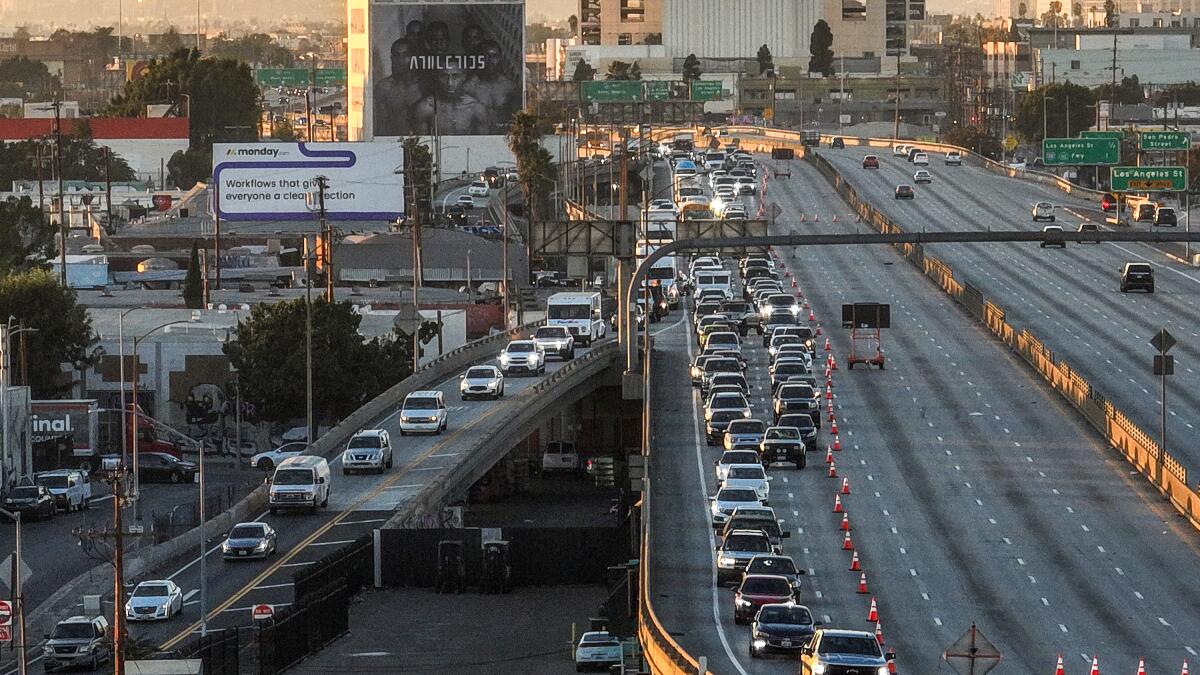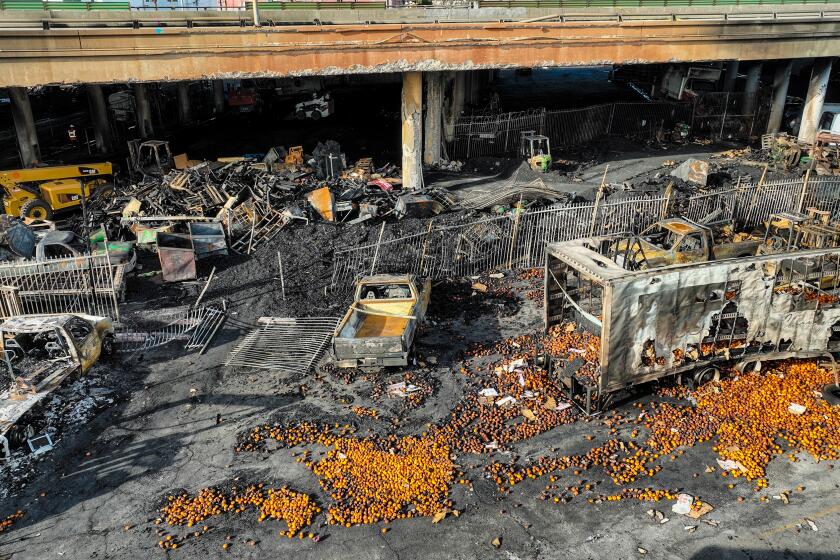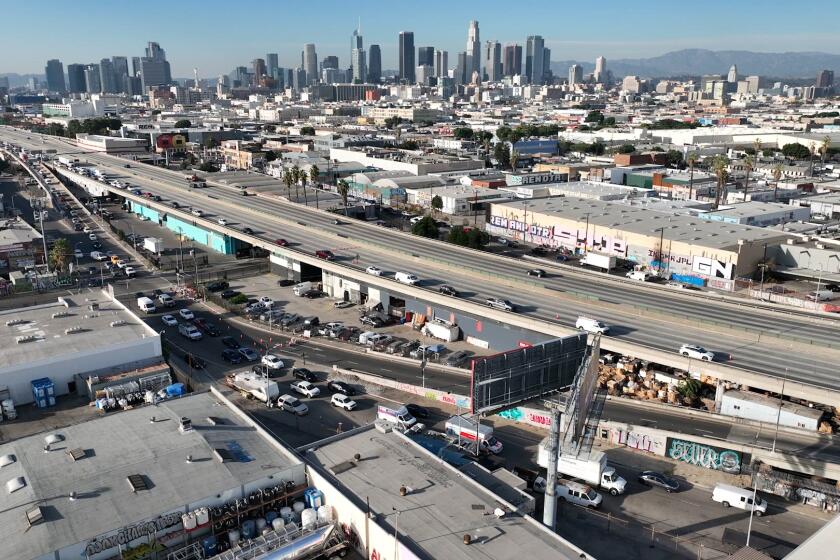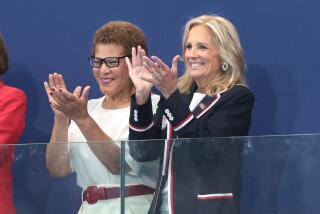L.A.’s post-fire push for public transportation: Free rides, faster trains, more buses

As gridlock seizes the streets of downtown Los Angeles following the 10 Freeway fire, L.A. officials are imploring drivers to ditch their cars and finally hop on public transit — and they’re using free rides, faster trains and more buses on city streets as incentive.
The Commuter Express bus service, which heads directly into the downtown area from multiple locations with few stops, will be free for the rest of the year.
“This is an opportunity for Angelenos to take advantage of the public transportation system that we have today,” Mayor Karen Bass said during a news conference Tuesday announcing the fare changes. A helicopter tour provided evidence, the mayor said, that downtown streets during the evening rush hour were an “absolute parking lot” in the fire’s aftermath.
Arson has been blamed in the massive blaze that forced the shutdown of the freeway in downtown Los Angeles.
Caltrans was trying to evict the company leasing the lot that caught fire and severely damaged the 10 Freeway. Agency says it illegally sublet the property to several small businesses.
On Tuesday, officials said the vital section of road would not have to be torn down, but repairs are likely to take weeks.
That poses the threat of significant gridlock on other freeways in the downtown area, as well as surface streets that the Los Angeles Department of Transportation has identified as detours. To mitigate some of that traffic, public officials are urging people to take public transportation, and making rides on Commuter Express buses free for the rest of 2023.
Riders would not have to pay the fare, which ranges from $1.50 to $4.25 for a one-way ride.
“All you have to do is board, enjoy the ride and let us take you to your final destination,” said Laura Rubio-Cornejo, general manager of the Los Angeles Department of Transportation, at Tuesday’s news conference.
After Bass announced free rides on all Commuter Express buses Monday, officials said they saw a significant increase in the number of passengers.
On Tuesday, there was a 19% increase on the number of riders when compared to Monday, said Colin Sweeney, a spokesperson with the city’s Department of Transportation.
The DASH bus service, which operates shorter routes within neighborhoods in Los Angeles, including the downtown area, have also been free since 2020.
DASH buses have seen a “slight decline” in the number of passengers this week in the downtown area, but Sweeney said the that could be a sign of residents heeding the mayor’s call to avoid trips to the downtown area whenever possible.
On Monday, the first weekday after the fire, Rubio-Cornejo said downtown surface streets being used as detours saw a 14.7% increase in traffic throughout the day.
On Tuesday, however, she said streets saw a 26% increase along the same streets, which she noted were already among the most congested routes in downtown Los Angeles under normal conditions.
With rain expected to worsen roadway conditions Wednesday, officials urged commuters to opt for public transportation instead.
L.A. Metro sees about 950,000 riders a day, but Lilian de Loza Gutierrez, director of community relations for Metro, said the system could handle more.
“Metro has the capacity to welcome even more Angelenos,” she said at a Wednesday news conference.
Gutierrez also encouraged people to use public transportation to get to events taking place this weekend in the downtown area, including the L.A. Auto Show at the Los Angeles Convention Center, and Friday’s Clippers game and Sunday’s Lakers game at the Crypto.com Arena.
A section of the 10 Freeway in downtown Los Angeles that was damaged by a massive fire over the weekend will not need to be demolished, but repairs will take three to five weeks, officials said.
As further incentive, Metrolink has temporarily increased the number of trains from San Bernardino and Covina to Union Station, said Randall Winston, deputy mayor of infrastructure for Bass’ office.
L.A. Metro has also added buses to Line 66, which runs along Olympic Boulevard, and Line 51, which runs along Soto Street. Those two lines, Winston said, were the most affected by delays Tuesday.
Mayor Bass also directed L.A. Metro to increase the speed on the E line, which runs along the 10 Freeway between Santa Monica and East Los Angeles with 29 stops in between.
That line, Winston said Wednesday morning, had a 10% increase in riders Tuesday.
The line is expected to be 5% to 10% faster.











